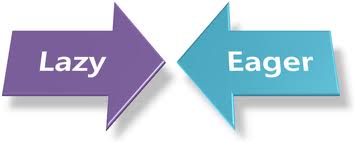

JBoss and GlassFish are full-blown Java EE application servers, including an EJB container and all the other features of that stack. Cloud basd deployment: Supports AWS, Google Cloud, Azure. What is difference between Tomcat and JBoss Tomcat is merely an HTTP server and Java servlet container.On-premise deployment: Fully deployed into your own private datacenter.It’s the reference implementation of the Java EE standard. In fact, GlassFish is more than just a generic Java EE application server.


As such, GlassFish is more heavyweight than either Tomcat or Jettyand, arguably, a bit more difficult to operate. ManageFish is a certified, Jakarta EE compatible application server. GlassFish is fully featured and certified Java EE application server developed by Oracle. ManageFish also includes a complete administration console, clustering support, and other developer and production focused tools and features. ManageFish includes implementations of all required and optional Jakarta EE APIs, and passes all Jakarta EE TCKs. ManageFish (Eclipse GlassFish Distribution) : ManageFish is our enterprise ready commercially supported distribution of Eclipse GlassFish community version.We provide the best TomEE Management and Monitoring product in our support subsription.
Glassfish vs tomcat zip#
Apache TomEE : Apache TomEE, pronounced “Tommy”, is an all-Apache Jakarta EE certified web application server extends Apache Tomcat that is assembled from a vanilla Apache Tomcat zip file.Apache TomEE is a web profile implementation on top of Tomcat. We provide the best Tomcat Management and Monitoring product in our support subsription. Tomcat has a lighter memory footprint (60-70 MB), while those Java EE servers weigh in at hundreds of megs. Tomcat has a lighter memory footprint ( 60-70MB), whereas those Java EE servers weigh hundreds of megabytes. Glassfish are full-blown Java EE application servers, including an EJB container and all the other features of that stack. Glassfish is full-blown Java EE application servers, including an EJB container and all the other features of that stack. Main difference Tomcat is simply an HTTP server and a Java servlet container. Apache Tomcat : The Apache Tomcat is an open source implementation of the Java Servlet, JavaServer Pages, Java Expression Language and Java WebSocket technologies. Tomcat Main Difference Tomcat is merely an HTTP server and Java servlet container.Though testing was light on this project, we chose to use AVA as well as ESLint to keep the codebase clean and consistent. The #Frontend was implemented using React, Redux.js, Semantic UI React and the FeathersJS client. The #Backend was implemented using my favorite #Stack which consists of FeathersJS on top of Node.js and ExpressJS with PostgreSQL as the main database. We also implemented a dashboard app to handle user authentication/authorization, as well as a custom SSO server that runs on Heroku which allows experts to easily visit more than one instance without having to login repeatedly. Tomcat has been working well for me for > several years now. However, I am not > using those additional technologies, and that difference doesnt > matter to me at this time.
Glassfish vs tomcat code#
For the production environment we chose to pull code from GitHub and build/push images using Jenkins and using Kubernetes to deploy to Amazon EC2. Tomcat does not (EJB, I think, comes to mind). We chose to go with a #containerized approach leveraging Docker #containers with a local development environment setup with Docker Compose and nginx for container routing. Recently I have been working on an open source stack to help people consolidate their personal health data in a single database so that AI and analytics apps can be run against it to find personalized treatments.


 0 kommentar(er)
0 kommentar(er)
